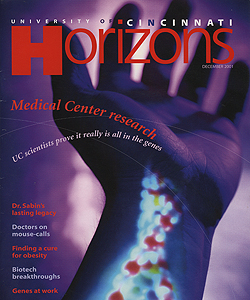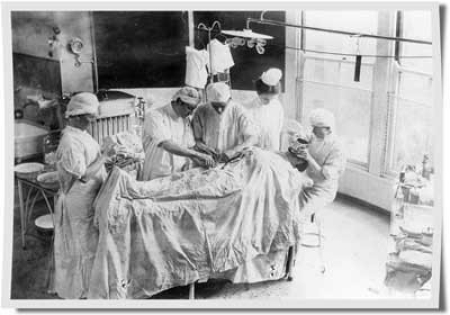1911 operating room
Today's patients would certainly cringe at the operating room practices familiar here in 1911. Surgical masks and sterile gloves were not yet standard equipment in the early 20th century, even in teaching hospitals like Cincinnati's. By the mid-1800s, doctors understood that microbes could cause infection and disease, and they began to carefully wash their hands between patients and to have their instruments disinfected with carbolic acid. The introduction of surgical gloves came after -- to protect the healthcare workers' hands from caustic soaps and chemicals.
It did not take long, however, for surgeons to realize that gloves also helped decrease the high rate of postoperative infections. Medical students in the early 1900s could also observe the administration of state-of-the-art anesthesia. The use of ether and chloroform relieved the pressure on doctors to race to complete a procedure before the patient awoke, as well as reduced trauma to the patient. Before the mid-1800s, patients' choices were rather grim: Stay awake, take opium, drink liquor or be knocked on the head with a mallet.

 Past Issues
Past Issues